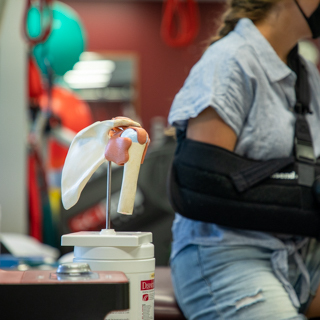Movement Science Lab
We are interested in collaborative relationships that relate to altering movement patterns, adaptations of skeletal muscle, and applied biomechanics. Please contact Dr. Ryan Mizner, Director of the Movement Science Laboratory, if you require additional information.
Ryan Mizner, PT, PhD
Email: ryan.mizner@umontana.edu
Rich Willy, PT, DPT
Email: rich.willy@umontana.edu
The mission of the Movement Science Laboratory is to change the practice of physical therapy to improve the outcomes and maximize the quality of life of patients with lower extremity injuries.
Conducting research should be a key component of a physical therapy program as it provides the bedrock of scientific evidence to support professional practice. Subsequently, research has a role in shaping curriculum and course content. We believe our research activities can have important impact on our patients’ well being by adding to the profession’s base of knowledge.
As such, the lab is particularly interested in clinical and translation research related to physical therapy practice. We believe that physical therapy can make a significant impact on physical impairments in skeletal muscle and motor control and our projects focus on impacting muscle, motor recruitment patterns, and muscle activation to improve patient mobility and quality of life.
Our focus is on the study of how the habitual movements of patients with lower limb disorders play a role in prevention and recovery after injury or surgery. Habitual limb movements during daily tasks, like limping, could limit gains made in muscle strength and can promote injuries such as tendonitis and osteoarthritis in the uninvolved limb. We believe that individuals can be retrained to alter the distribution of loads on the limbs to enhance recovery and physical performance while reduced the chance for future injuries.
For example, patients who have advanced knee osteoarthritis and total knee replacement exhibit physiological traits similar to muscular disuse. We hypothesize these traits are a result of chronic limb avoidance tendencies during daily activities. We hope to develop interventions that would successfully promote long-term modifications to these movement patterns to progressively increase physical stresses on the knee and surrounding musculature to a level that encourages better musculoskeletal health. Movement retraining should promote adaptations that would enhance strength gains and improve physical performance after surgery while providing protection of overuse injuries in the joints of the uninvolved limb.
